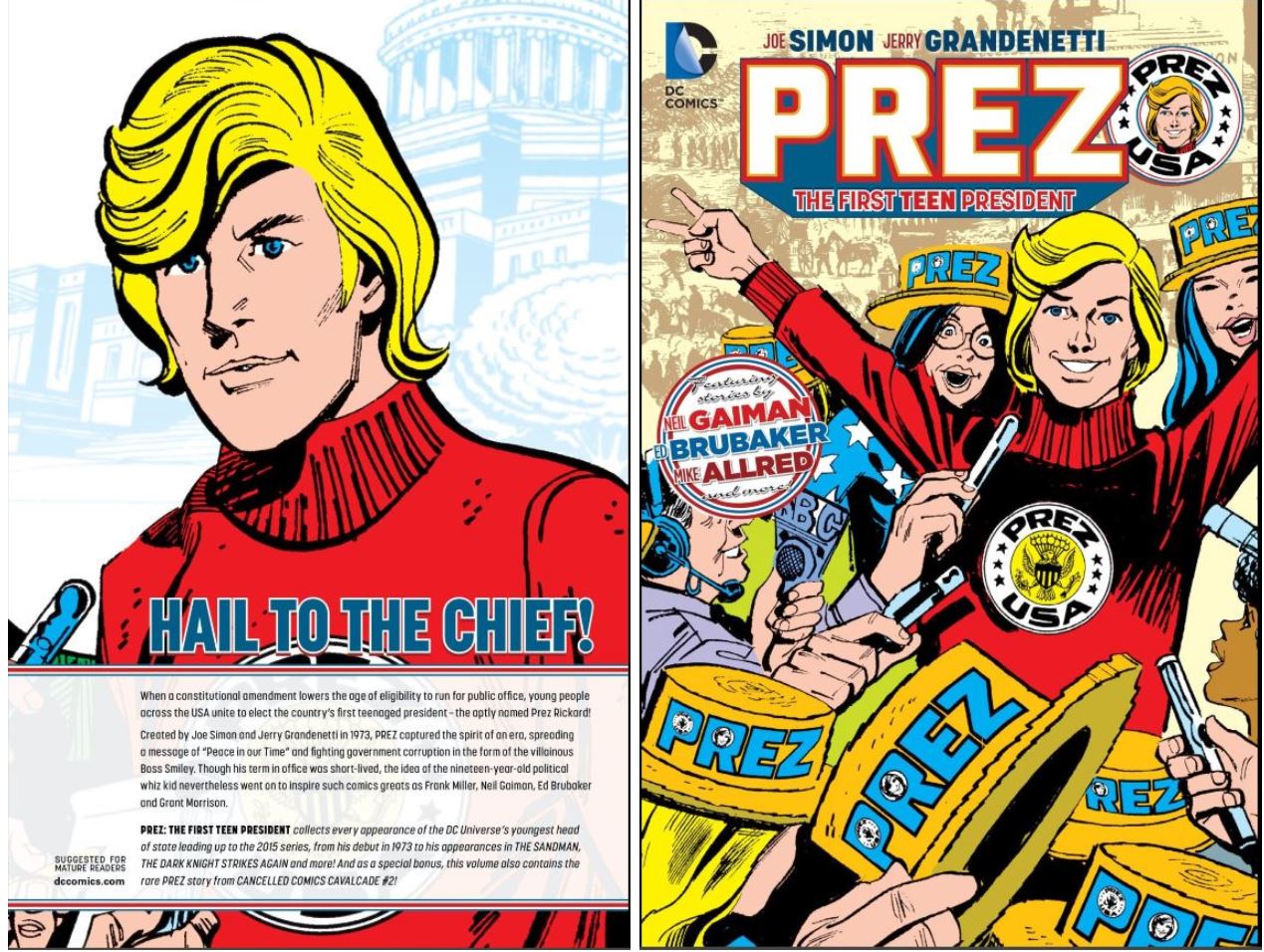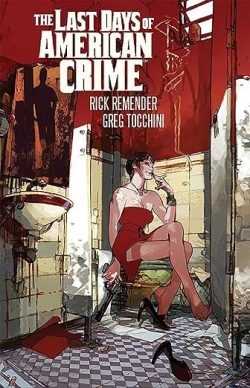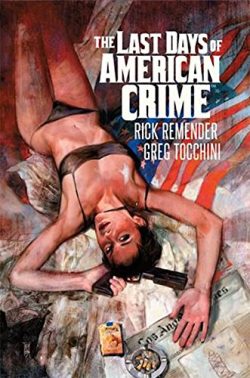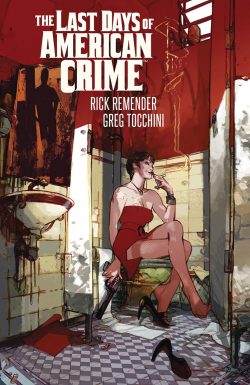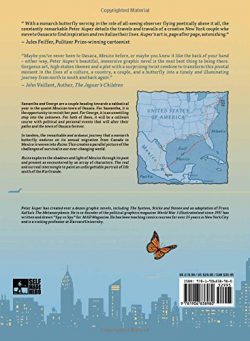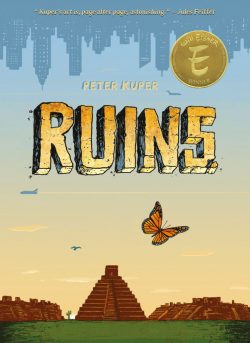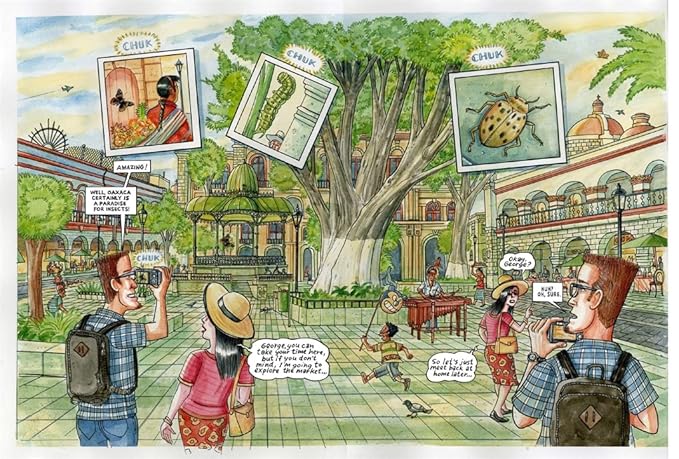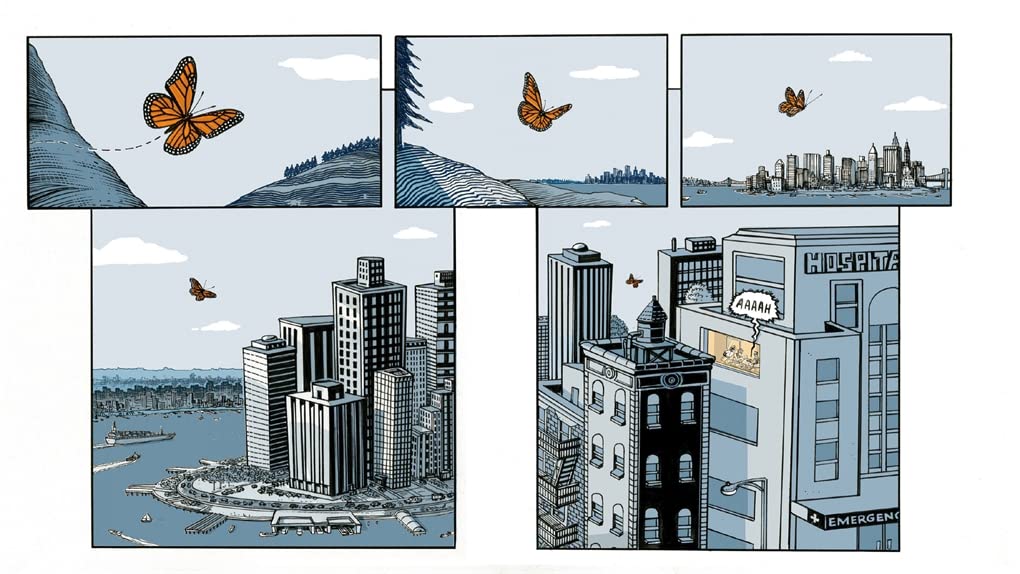


By Stan Lee & Jack Kirby, Roy Thomas, Mike Friedrich, Ron Goulart, Gerry Conway, Tony Isabella, Jim Starlin, Bill Mantlo, David Anthony Kraft, Len Wein, Mark Gruenwald, Gil Kane, Bob Brown, Herb Trimpe, John Buscema, Tom Sutton, John Byrne, Steve Leialoha, Jerry Bingham, Joe Sinnott, Vince Colletta, Dan Adkins, Jack Abel, Josef Rubinstein, Al Milgrom, Alan Weiss, Dave Hunt, Frank Giacoia, Mike Esposito, Gene Day & various (MARVEL)
ISBN: 978-1-3029-4987-7 (HB/Digital edition)
And lo… there came another star to the firmament…
During the 1970s in America and Britain (the latter of which deemed newspaper cartoons and strips worthy of adult appreciation for centuries whilst fervently denying similar appreciation and potential for comics), the first inklings of wider public respect for the medium of graphic narratives began to blossom. This followed avid and favourable response to pioneering stories such as Denny O’Neil & Neal Adams’ “relevancy” Green Lantern run, Stan Lee & John Buscema’s biblically allegorical Silver Surfer or Roy Thomas’ ecologically strident antihero Sub-Mariner; a procession of thoughtfully-delivered depictions of drug crime in many titles, and the sustained use of positive racial role models everywhere on four-colour pages.
Comics were inexorably developing into a vibrant forum of debate (a situation also seen in Europe and Japan), engaging youngsters in real world issues relevant to them. As 1972 dawned, Thomas took the next logical step, transubstantiating an old Lee & Kirby Fantastic Four throwaway foe into a potent political and religious metaphor. As described in his Introduction ‘Rebirth’ the kernel of that character debuted as FF foe Him before being re-imagined by Thomas & Gil Kane as a modern interpretation of the Christ myth: stationed on an alternate Earth far more like our own than that of Marvel’s unique universe.
This massive epistle re-presents Fantastic Four #66-67, The Mighty Thor, #165-166, Marvel Premiere #1-2, Warlock #1-15, Strange Tales #178-181, Incredible Hulk #176-178 and Annual #6, Marvel Team-Up #55, Avengers Annual #7 and Marvel Two-in-One #61-63 and Annual #2 – collectively spanning cover-dates September 1967 to May 1980 – and starts with that cataclysmic clash as Ben Grimm and his friends search for The Thing’s true love Alicia Masters.
The mystery of her disappearance is revealed in ‘What Lurks Behind the Beehive?’ by Lee, Kirby & Joe Sinnott, as the outraged FF trail the seemingly helpless artisan to a man-made technological wonderland. Here a band of rogue geniuses have genetically engineered the next phase in evolution only to lose control of it even before it can be properly born…
Fantastic Four #67 exposes the secret of the creature known as Him in ‘When Opens the Cocoon!’ where only Alicia’s gentle nature is able to placate the nigh-omnipotent creature until the heroes save her and the creation deals with its squalid makers, before heading into the starry universe to mature…
‘Him!’ resurfaced in Thor #165 & 166 (June & July 1969), returned to earth in his gestation cocoon and stumbling into battle with a severely over-stressed Thunder God. The situation intensified when the creature created by evil scientists to conquer mankind sees Sif and decides it’s time he took a mate…
Conclusion ‘A God Berserk!’ sees Thor trailing the artificial superman across space and assorted dimensions with companion Balder who witnesses his gentle comrade’s descent into brutal “warrior-madness” resulting in a savage beating of naive childlike Him. By the time the Thunderer regains his equilibrium, he is a shaken, penitent and guilt-ridden hero eager to pay penance for his unaccustomed savagery whilst the modern homunculus has retreated to the chill depths of space again…
Jump forward to tumultuous turbulent 1971 where the story really begins with the April cover-dated Marvel Premiere #1 (on sale from November 1971) which boldly proclaimed on its cover The Power of… Warlock. Inside, the stunning fable by Thomas, Kane & Dan Adkins declared ‘And Men Shall Call Him… Warlock’: swiftly recapitulating the artificial man’s origins as a lab experiment concocted by rogue geneticists eager to create a superman they could control for conquest. Also on view is the manufactured man’s face off with the FF, and clash with Thor over the rights to a mate before returning to an all-encompassing cosmic cocoon to evolve a little more. Now the shell is plucked from the void thanks to the moon-sized ship of self-created god The High Evolutionary. Having artificially ascended to godhood, he is wrapped up in a bold new experiment…
Establishing contact with Him as he basks in his cocoon, the Evolutionary explains that he is constructing from space rubble a duplicate planet Earth on the opposite side of the sun. Here he will replay the development of life, intending that humanity on Counter-Earth will evolve without the taint of cruelty and greed and deprived of the lust to kill. It’s a magnificent scheme that might well have worked, but as the Evolutionary wearies, his greatest mistake intervenes…
Man-Beast was over-evolved from a wolf and gained mighty powers, but also ferocious savagery and ruthless wickedness. Now he invades the satellite, despoiling humanity’s rise and ensuring the new world’s development exactly mirrors True-Earth’s. The only exception is the meticulous exclusion of enhanced individuals. The beleaguered orb has all Earth’s woes but no superheroes to save or inspire its people.
A helpless witness to the desecration, the golden being furiously crashes free of his cocoon to save the High Evolutionary and rout Man-Beast and his bestial cronies (all similarly evolved animal-humanoids called “New-Men”). When the despondent, enraged science god recovers, he decides to erase his failed experiment but is stopped by his rescuer. As a helpless observer, Him saw the potential and value of embattled humanity. Despite all their flaws, he believes he can save them from imminent doom caused by their own unthinking actions, wars and intolerance. When his pleas convince the Evolutionary to give this mankind one last chance, the wanderer is hurled down to Counter-Earth, gifted and graced with a strange “Soul Gem” to focus his powers, on a divine mission to find the best in the fallen and a name of his own…
Marvel Premiere #2 (July 1972) sees the golden man-god crash down in America and immediately win over a small group of disciples: a quartet of disenchanted teen runaways fleeing The Man, The Establishment and their oppressive families. His cosmic nativity and transformation leave the newcomer briefly amnesiac, and as Warlock’s followers seek to help, all are unaware that Man-Beast has moved swiftly, insinuating himself and his bestial servants into the USA’s political hierarchy and Military/Industrial complex.
This devil knows the High Evolutionary is watching and breaks cover to introduce unnatural forces on a world previously devoid of superbeings or aliens. The result is an all-out attack by rat mutate Rhodan, who pounces on his prey at the very moment Colonel Barney Roberts, uber-capitalist Josiah Grey and Senator Nathan Carter track their missing kids to the desolate Southern Californian farm where they have been nursing a golden angel. Men of power and influence, they realise their world has changed forever after seeing Warlock destroy the monstrous beast and ‘The Hounds of Helios!’
Doctor Strange was revived to fill the space in MP #3, as the gleaming saviour catapulted into his own August cover-dated title. Inked by Tom Sutton, Warlock #1 decreed ‘The Day of the Prophet!’: recapping key events and seeing the High Evolutionary safeguard his failing project by masking Counter-Earth from the rest of the solar system behind a vibratory screen.
With his mistake securely isolated from further contamination, HE asks Adam if he’s had enough of this pointless mission, and is disappointed to see Warlock’s resolve is unshaken. That assessment is questioned when the disciples take the spaceman to his first human city. Senses reeling, Warlock is drawn to a bombastic street preacher and his psychic sister Astrella, both seemingly targeted by the Man-Beast. Of course, all is not as it seems…
This issue saw the first letter page ‘Comments from Counter-Earth’ and is included here as are all subsequent editorial columns.
Mike Friedrich scripted Thomas’s plot and John Buscema joins Sutton in #2’s illuminating ‘Count-Down for Counter-Earth!’: taking biblical allegory even further as Warlock is captured by his vile foes and tempted with power in partnership with evil, even as his young disciples are attacked and deny him. Counter-Earth has never been closer to damnation and doom, but once more the saviour’s determination overcomes the odds…
The epic expands with Friedrich in the hot seat and Kane & Sutton reunited to steer the redeemer’s path. ‘The Apollo Eclipse’ begins with Adam and his apostles harassed by the increasingly impatient High Evolutionary following a breaching of his vibratory barrier by the Incredible Hulk and the Rhino (in Hulk #158 and reprinted in many volumes… but not this one). That episode is soon forgotten when they are targeted by another Man-Beast crony, hiding his revolting origins and unstable psyche behind a pretty façade. The hirsute horror attacks a rocket base where Adam seeks to reconcile his youthful followers with their parents, but the subsequent clash turns to tragedy in #4’s ‘Come Sing a Searing Song of Vengeance!’ as the exposed monster takes the children hostage. Astrella senses that visiting Presidential candidate Rex Carpenter holds the key to the stalemate, but when he intervenes at her urging, unbridled escalation, death and disaster follow…
Although super-beings were excised from the world’s evolution, extraordinary beings still exist. Warlock #5 (April 1973) sees Ron Goulart write the anxious aftermath as the doubt-riddled redeemer emerges from another sojourn in a recuperative cocoon. In the intervening months Carpenter has become President and ordered increased weapons testing to combat the incredible new dangers he personally witnessed. Tragically, he also ignores warnings from government scientist Victor Von Doom, and when a military manoeuvre sparks ‘The Day of the Death-Birds!’ Adam helps when a dam is wrecked. His divine might is sufficient to halt autonomous robotic drones programmed to strafe ground-based beings, but cannot stop the grateful citizenry turning on him when Carter declares him a menace to society…
Friedrich scripts Goulart & Thomas’ plot and Bob Brown joins the team as penciller in #6 as Warlock battles the army and Doom contacts fellow genius Reed Richards for help. Sadly, the Latverian is unaware of a shocking change in his oldest friend who is now ‘The Brute!’: a mutated cosmic horror enthralled by the malign thing running the White House and now ordered to ambush Warlock as Astrella brings him to truce talks…
It’s a pack of lies and a trap. As the Golden Gladiator defeats Richards, enraged mobs egged on by PotUS attack Warlock’s growing band of supporters. Now, though, the alien’s very public life-saving heroics have swayed fickle opinion and Carter is forced to reverse his stance and exonerate Warlock. Even this is a ploy, though, allowing him to set the energy-absorbing Brute on the redeemer in ‘Doom: at the Earth’s Core!’ Beyond all control, Richards’ rampage threatens to explode Counter-Earth, and only the supreme sacrifice of one of Adams’s constantly dwindling band of supporters saves the planet…
Warlock’s rocky road paused with the next issue. Cancelled with #8, Friedrich, Brown & Sutton dutifully detailed ‘Confrontation’ in Washington DC as the supposed saviour’s supporters clashed with incensed cops. Intent on stopping a riot, Warlock’s work magnifies when Man-Beast’s New-Men minions join the battle. The saga ends on an eternal cliffhanger as Warlock finally exposes what Carpenter is… before vanishing from sight for 8 months.
The aforementioned Hulk #158 had seen the Jade Goliath dispatched to the far side of the Sun to clash on Counter-Earth with the messiah’s enemies. Although it is excluded here, the 3-issue sequel it spawned was concocted after the Golden Godling’s series ended. When the feature returned, the tone – like the times – had comprehensively changed. All the hopeful positivity and naivety had, post-Vietnam and Watergate, turned to world-weary cynicism in the manner of Moorcock’s doomed hero Elric. Maybe a harbinger of things to come…?
The cosmic codicil completing Warlock’s initial cosmic journey came after The Hulk’s encounter with the Uncanny Inhumans and a devastating duel with silent super-monarch Black Bolt. Following the usual collateral carnage, the bout ended with the monster hurtling in a rocket-ship to the far side of the sun for a date with allegory, if not destiny. Counter-Earth had seen messianic Adam Warlock futilely battle Satan-analogue Man-Beast: a struggle the Jade Juggernaut had learned of on his previous visit. Now he crashed there again to end the cruelly truncated metaphorical epic, beginning in ‘Crisis on Counter-Earth!’ (Incredible Hulk #176, June 1974) by Gerry Conway, Herb Trimpe & Jack Abel.
Since his last visit Man-Beast and his bestial flunkies had become America’s President and Cabinet. Moving deceptively but decisively, they had finally captured Warlock and led humanity to the brink of extinction, leaving the would-be messiah’s disciples in total confusion. With America reeling, Hulk’s shattering return gives Warlock’s faithful flock opportunity to save their saviour in ‘Peril of the Plural Planet!’ but the foray badly misfires and Adam is captured. Publicly crucified, humanity’s last hope perishes. The quasi-religious experience concludes with ‘Triumph on Terra-Two’ (Conway, Tony Isabella, Trimpe & Abel, Incredible Hulk #178). Whilst Hulk furiously battles Man-Beast, the expired redeemer resurrects in time to deliver a karmic coup de grace before ascending from Counter-Earth to the ever-beckoning stars.
The epic pauses here for Douglas Wolk’s critical appreciation of what happens next in ‘Unmistakable Talent’ before even more grandiose events are revealed…
The messianic saga apparently ended when Warlock died and was reborn, thwarting Satan-analogue Man-Beast with the aid of the Jade Juggernaut enacting a cosmic resurrection and ascending into the unknown. However, when the feature returned at the end of 1974 the tone, like the times, had hugely changed. In the wake of Vietnam and Watergate, hope, positivity and comfortable naivety had become world-weary cynicism. The new Adam had changed too, and was now draped in precepts of inescapable destiny in the manner of doomed warrior Elric. It was a harbinger of things to come…
The story resumed in Strange Tales #178 as ultra-imaginative morbid maverick Jim Starlin (Captain Marvel, Master of Kung Fu, Infinity Gauntlet, Dreadstar, Batman, Death in the Family, Kid Kosmos) turned the astral wanderer into a nihilistic, Michael Moorcock-inspired, death-obsessed, constantly outraged, exceedingly reluctant and cynical cosmic champion. The slow spiral to oblivion began in February cover-dated Strange Tales #178, wherein Starlin introduced alien Greek Chorus Sphinxor of Pegasus to recap the past by asking and answering ‘Who is Adam Warlock?’
Handling everything but lettering – that was left to Annette Kawecki – Starlin’s solitary stellar nomad Warlock is brooding on a desolate asteroid in the Hercules star cluster just as a trio of brutes attack a frightened girl. Despite his best efforts they execute her, proud of their status as Grand Inquisitors of the Universal Church of Truth who have ecstatically excised one more heathen unbeliever…
Appalled to have failed another innocent, Warlock employs the Soul Gem at his brow to briefly resurrect her and learns of an all-conquering ruthless militant religion dedicated to converting or eradicating all life. His search triggers a chilling confrontation as ‘Enter The Magus!’ manifests the living god of the UCT who attacks Warlock with a crushingly awful truth: the man who has subjugated worlds, exterminated trillions and fostered every dark desire of sentient beings is his own future self. Adam vows to end this perverse impossible situation, doing whatever is necessary to prevent becoming his own worst nightmare…
With Tom Orzechowski lettering and Glynis Oliver-Wein doing colours, Starlin’s pilgrimage sees Warlock attack a UCT warcraft transporting rebels, “degenerates” and “unproductives” from many converted worlds. The church only deems basic humanoids as sacred and worthy of salvation, with most other shapes useful only as fodder or fuel. However, despite their appearance as humanish, The Church does make an exception for the universally deplored, vulgar and proudly reprobate race called “Trolls” who are too salacious to exist…
In the dungeon-brig of the ship Great Divide, Adam’s gloomy mood is irresistibly lifted by disgusting troll Pip: a lout revelling in “independent manner and cavalier ways”, unphased or frightened by the imminent death awaiting them all. Meanwhile, enhanced true believer Captain Autolycus gets a message from Temporal Leader of the Faithful The Matriarch. She has decided to ignore her god’s instruction to capture Warlock and keep him unharmed…
As Adam instructs his fellow dregs in the nature of rule, Autolycus acts on her command, losing his entire crew and perishing when Warlock finally breaks loose. After escaping the ‘Death Ship!’, Adam realises Pip – keen to share a new adventure – has stowed away, but lets it go. He has a bigger problem: in the climactic final battle, the Soul Gem refused his wishes. Acting on its own, it consumed Autolycus’ memories and persona, binding them inside the twisted champion’s head…
With additional inking by Alan Weiss, ST #180’s ‘Judgment!’ finds Pip and Warlock submerged in the heaving masses of Homeworld whilst hunting the living god. Terrified of the uncontrollable spiritual vampire on his brow, Adam tries to remove it and discovers it has already stolen him: without it he will perish in seconds…
Living on borrowed time and pushed into precipitate action, the apostate avenger invades the Sacred Palace and is offered a curious deal by the Matriarch who imprisons him when he refuses. Subjected to ‘The Trial of Adam Warlock’, the appalled adventurer endures a twisted view of the universe courtesy of Grand Inquisitor Kray-Tor, even as in the city, Pip thinks he has scored with a hot chick when in fact he’s been targeted by public enemy number one. Called “the deadliest woman in the whole galaxy” Gamora has plans for Adam, which include him being alive and free…
Back in court, the golden man rejects Kray-Tor’s verdict and, revolted by the proceedings, foolishly lets his Soul Gem feed. The carnage it triggers and his subsequent guilt leaves Adam catatonic in the hands of the Matriarch’s cerebral re-programmers…
Starlin was always an outspoken, driven creator with opinions he struggled to suppress. His problems with Marvel’s working practises underpin ST #181’s ‘1000 Clowns!’ as old pal Al Milgrom inks a fantastic recap and psychological road trip inside the champion’s mind. None of the subtext is germane if you’re just looking for a great story however, and – in-world – Warlock’s resistance to mind-control is mirrored by Pip and Gamora’s advance through the UCT citadel to his side. Embattled by the psychic propaganda assaulting him, Warlock retreats into the safety of madness, learning to his horror that this is what The Magus wanted all along. Now the dark messiah’s victory and genesis are assured…
The triumph was celebrated by the resurrection of the hero’s own title. Cover-dated October 1975, Warlock #9 revealed the master plan of Adam’s future self. Inked by Steve Leialoha, ‘The Infinity Effect!’ depicted the mirror images in stark confrontation with evil ascendent, unaware Gamora was an agent of a hidden third party and that all the chaos and calamity was part of a war of cosmically conceptual forces. The saga heads into the Endgame as the Magus explains in cruel detail how he came to power and how warlock’s coming days are his past, before summoning abstract conceptual terror The In-Betweener to usher in their inevitable transfiguration. There is one problem however: the first time around Adam/Magus was never attacked and almost thwarted by an invisible green warrior woman…
Crushed by realisation that he will become a mass-murdering spiritual vampire, Adam reels as the hidden third element arrives to save everything. Inked by Leialoha, #10’s ‘How Strange My Destiny!’ finds Pip, Gamora, Adam and Thanos of Titan battling 25,000 cyborg Black Knights of the Church who rapturously pay ‘The Price!’ of devotion in a horrific stalling tactic until the In-Betweener comes…
Kree Captain Mar-Vell narrates a handy catch-up chapter detailing ‘Who is Thanos?’ as the beleaguered champions escape, before ‘Enter the Redemption Principle!’ explores some of the Titan’s scheme and why he opposes the Magus and his Church, even as the dark deity realises that Thanos’ time probe is the only thing that can upset his existence…
How Strange My Destiny – with finished art by Leialoha from Starlin’s layouts – continues and concludes in #11 as ‘Escape into the Inner Prison!’ sees the Magus and his Black Knight death squads brutally board Thanos’ space ark. A combination of raw power and the Soul Gem buy enough time for Warlock and Pip to use the time probe, which deposits them in the future, just as In-Betweener arrives to convert the hero and supervise ‘The Strange Death of Adam Warlock!’, resulting in a reshuffling of chronal reality and mad Thanos’ triumph…
After months of encroaching and overlapping Armageddons, Warlock #12 digresses and diverts with ‘A Trollish Tale!’ as Pip’s fondness for hedonism and debauchery entrap him in professional harlot Heater Delight’s plan to escape a life on (non)human sexual trafficking in a star-roaming pleasure cruiser. He’s happy with the promised reward for his efforts, but hasn’t considered that her pimp might object to losing his meal ticket…
Cosmic conflict returns in #13 as ‘…Here Dwells the Star Thief!’ introduces an existential threat to the entire universe lying in a hospital bed on Earth. New England’s Wildwood Hospital houses Barry Bauman, whose life is blighted by a total disconnection between his brain and nerve functions. Isolated, turned inward for his entire life, Barry has developed astounding psychic abilities, the first of which was to possess his nurse and navigate an unsuspecting outer world by proxy. Barry’s intellect also roams the endless universe and brooding, doomed Warlock is there when Barry consumes an entire star just for fun…
Outraged at such cruel wilful destruction, Warlock uses his own powers to trace the psionic force, resolved to follow it back to the planet of his original conception even as ‘The Bizarre Brain of Barry Bauman’ explores the Star Thief’s origins and motivations prior to the psionic savant formally challenging Adam to a game of “stop me if you can”…
Spitefully erasing stars and terrorising Earth as Warlock traverses galaxies at top speed, Bauman knows a secret about his foe that makes victory assured, but he still lays traps in the hero’s interstellar path. The ‘Homecoming!’ is accelerated by a shortcut through a black hole, but when Adam arrives in Sol system, he receives a staggering shock: his voyages and simple physics have wrought physical changes making it impossible to ever go home again. Sadly for gleeful Barry, the frustration of his foe distracts him just when he should be paying closer attention to his physical body…
The series abruptly ended again (November 1976), Starlin returned to full art & story chores in #15’s ‘Just a Series of Events!’ Exiled from Earth, Adam rants as elsewhere, Thanos expedites long-term plans. With The Magus removed, his desire for total stellar genocide can proceed, but the Titan worries that his adopted daughter Gamora might be a problem, when he really needs to be more concerned about his own nemesis-by-design Drax the Destroyer. The saga then pauses with Adam confronting a host of plebian injustices and seemingly regaining command of his Soul Gem at last…
Vanished again, Warlock only languished in limbo for a few months. In mid-December 1976, Marvel Team-Up #55 (cover-dated March 1977) addressed his physically altered state as Bill Mantlo, John Byrne & Dave Hunt crafted ‘Spider, Spider on the Moon!’ For reasons too complicated to explain here, Spider-Man had been trapped in a rocket and blasted into space before being happily intercepted and left by Warlock in Luna’s habitable “Blue Area”. The nomad then assisted the Arachnid and mysterious alien The Gardener against overbearing exotic ephemera collector The Stranger who sought possession of the Golden Gladiator’s life-sustaining Soul Gem, but soon discovered an equally fascinating alternate choice…
Despite his sporadic and frankly messy publishing career, Warlock has been at the heart of many of Marvel’s most epochal and well-regarded cosmic comic classics, and ending this compendium is probably the very best: an extended epic spanning two summer annuals and seemingly signalling the end on an era…
‘The Final Threat’ (by Starlin & Joe Rubinstein in Avengers Annual #70, sees Protector of the Universe Mar-Vell AKA Captain Marvel and Titanian ultra-mentalist Moondragon back on Earth with vague anticipations of impending catastrophe. The premonitions are confirmed when Warlock arrives with news that death-obsessed Thanos has amassed an alien armada and built a soul gem-fuelled weapon to snuff out stars like candles. Spanning interstellar space to stop the scheme, the assembled heroes forestall alien invasion and prevent the Dark Titan from destroying the Sun, but only at the cost of Warlock’s life…
‘Death Watch!’ (Starlin & Rubinstein, Marvel Two-in-One Annual #2) then finds Peter Parker plagued by prophetic nightmares. These disclose how Thanos had snatched victory from defeat and now holds The Avengers captive whilst again preparing to extinguish Sol. With nowhere else to turn, the anguished, disbelieving webspinner heads for the Baxter Building, hoping to borrow a spacecraft, and unaware that The Thing also has a history with the terrifying Titan. Utterly overmatched, the mismatched Champions of Life nevertheless upset Thanos’ plans for long enough to free the Avengers before the Universe’s true agent of retribution ends the Titan’s threat forever… at least until next time…
Meanwhile on Earth, events are unfolding that will impact the future. The Hulk, bereft by the death of his subatomic lover Jarella, joins Defender chief Doctor Stephen Strange in David Anthony Kraft, Herb Trimpe and inkers Frank Giacoia & Mike Esposito for Incredible Hulk King Size Annual #6’s ‘Beware the Beehive!’ Here three of the mad scientists who made Him attempt to recreate their greatest success and failure. Morlak, Shinsky and Zota of rogue science collective The Enclave reactivate their hidden “Beehive” for another go at building a compliant god they can control, and abduct Doctor Strange to replace their missing fourth. The undercover magician summons the Jade Juggernaut to extract him from the experiment’s inevitable consequences when a compassionless super-slave dubbed Paragon emerges from a cocoon.
Before The Hulk arrives the natal menace tries to eradicate Strange and subdue mankind, but happily, after a border-shattering, army-crunching global rampage, that’s when the Hulk kicks the wall in and goes to work, forcing Paragon to return to its chrysalis and pursue further growth…
The stellar epic continued in Marvel Two-In-One: a title that had become a clearing house for unfinished plotlines and sagas. In #61 (cover-dated March 1980), Mark Gruenwald, Jerry Bingham & Gene Day unveiled ‘The Coming of Her!’ as time-travelling space god and 31st century Guardian of the Galaxy Starhawk became entangled in the birth of a female counterpart to artificial superman Adam Warlock. Picking up threads of the Hulk tale as well as Warlock’s quest, the tale told how Paragon awoke fully empowered and in female form and configuration and instantly began searching Earth for her predecessor. The fading psychic trail led to Ben Grimm’s girlfriend Alicia and Moondragon, who were pressganged across the solar system, arriving by MTIO #62 in time to witness ‘The Taking of Counter-Earth!’
Hot on their heels, The Thing and Starhawk catch Her just as the women encounter a severely injured High Evolutionary, and discover the world the self-created science god so carefully built and casually discarded has been stolen. Now united in mystery, the strange grouping follow the lost planet’s trail out of the galaxy and uncover the incredible perpetrators, but Her’s desperate quest to secure her predestined mate ends in tragedy when she learns ‘Suffer Not a Warlock to Live!’
The sidereal saga seemingly done, this collection also offers a bonanza of bonus treats which include a gallery of covers by Kirby, Sinnott & Colletta, Kane & Adkins, Frank Giacoia, John Romita, John Buscema, Trimpe, Starlin, Weiss, George Pérez & Terry Austin, house ads, original art pages by Kirby, Sinnott & Colletta, the 1972 Marvel Bulletin Page announcing Adam Warlock’s debut, John Romita corner-box art for Marvel Premiere #1, unused and corrected page & panel art, 9 pages of Kane finished art and numerous pencil roughs, augmented by 16 pages by Starlin and the cover of F.O.O.M. #9 (March 1975 and a “Special Cosmic Issue”) plus Duffy Vohland’s illustrated essay ‘Man is the Father to Him’.
Also on view are Starlin & Alan Weiss’s contributions to The Mighty Marvel Bicentennial Calendar 1976, and 16 pages of unused pencils by Weiss. (The photostats come from an issue lost in transit, and are supplemented by before-&-after panels judged unsuitable by the Comics Code Authority, the various production stages of Starlin & Weiss’ cover art for Warlock #9, with sketches, designs, frontispieces and full pages of original art). More Starlin original art and Weiss’ ‘Thanos War’ plate for the Marvel Team-Up Portfolio (1982).
Fact-filled pages on Warlock, The Enclave, Drax the Destroyer, The Gardener, In-Betweener, Gamora, Her, High Evolutionary, Moondragon, Pip the Troll, Thanos and 8 Alien Races from The Official Handbook of the Marvel Universe (1983-1985) precede a comedic offering from August 1982’s What If? #34 and Bob Budiansky & Bob Wiacek’s cover for Marvel Treasury Edition #24: The Rampaging Hulk (reprinting the Warlock saga from #175-178). The Fantastic Four “Him” debut was reprinted in Marvel’s Greatest Comics #49 & 50 (May & June 1974) and the covers are included here, as are those of Fantasy Masterpieces volume 2 #8-14 (1980-1981 reprinting Starlin’s early Warlock stories). They are augmented by the wraparound covers from 1983’s Warlock Special Edition #1-6 reprint series – including additional bridging pages, text and cartoon editorials by Al Milgrom and Starlin pin-ups.
A Craig Hamiliton Warlock plate from 1986’s Marvel’s Comics Limited Edition Superhero Print Series is followed by covers for 1992-1993’s Warlock rerun series (#1-6 and released to support the Infinity Gauntlet miniseries) and 9 prior collection and omnibus covers by Kane, Adkins, Richard Isanove, Starlin, Tom Smith, Weiss, Thomas Mason, Dean White and InHyuk Lee.
Ambitious, unconventional and beautiful to behold, Warlock’s oft-reprinted adventures are very much a product of their tempestuous, socially divisive times. For many, they proved how mature comics might become, but for others they were simply pretty pictures and epic fights with little lasting relevance. What they unquestionably remain is a series of crucial stepping stones to greater epics: unmissable appetisers to Marvel Magic at its finest.
© 2023 MARVEL.






